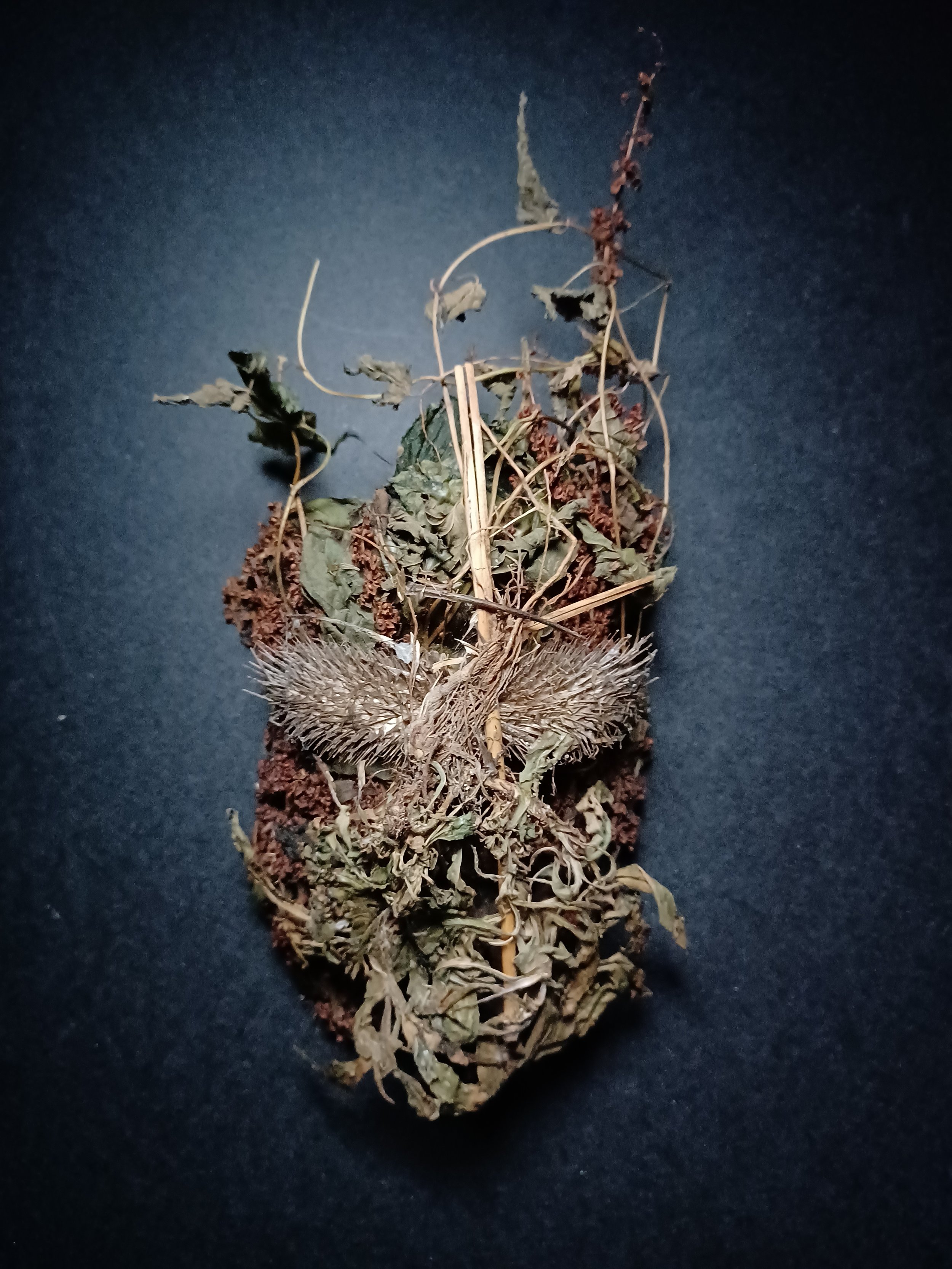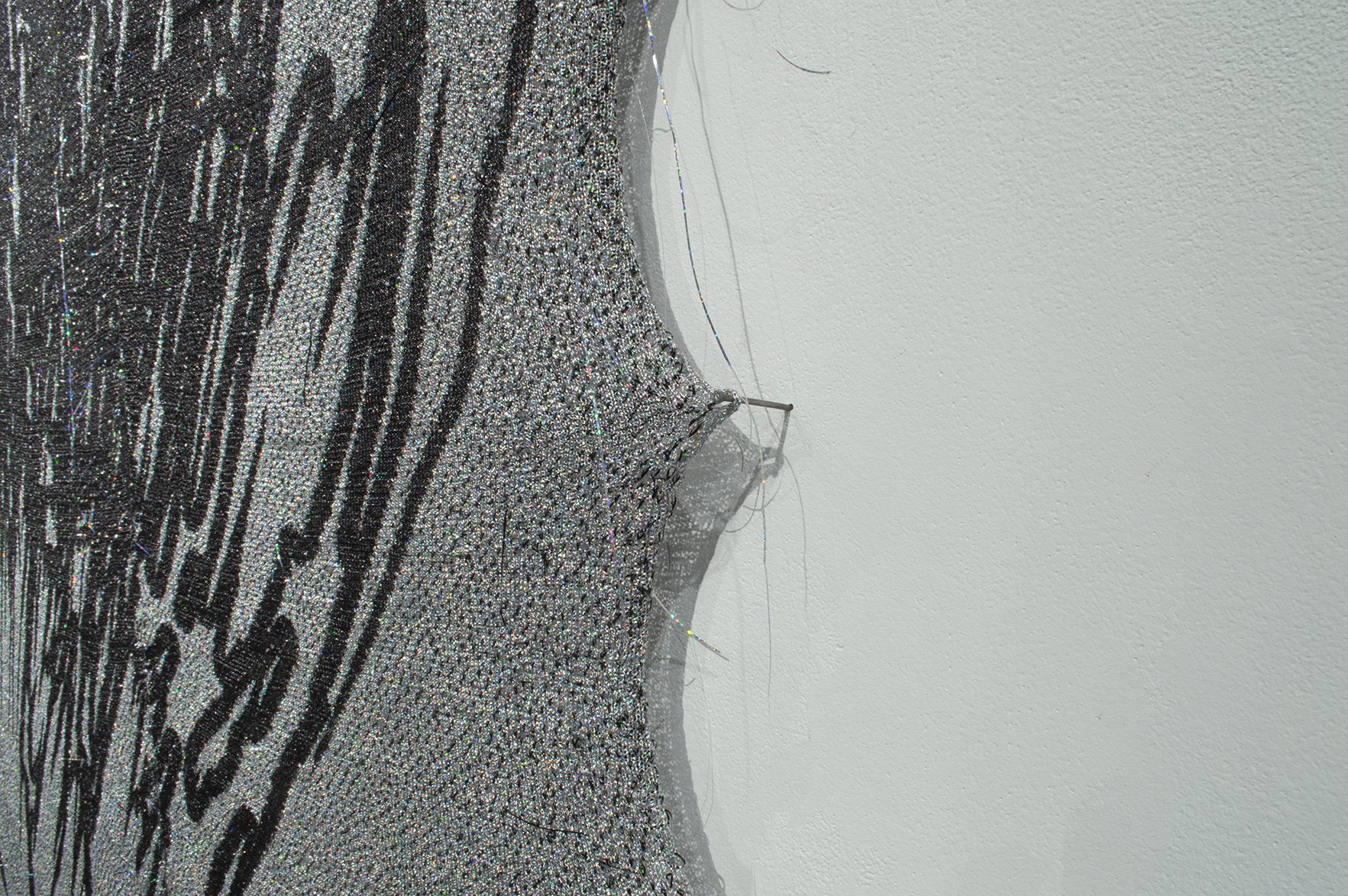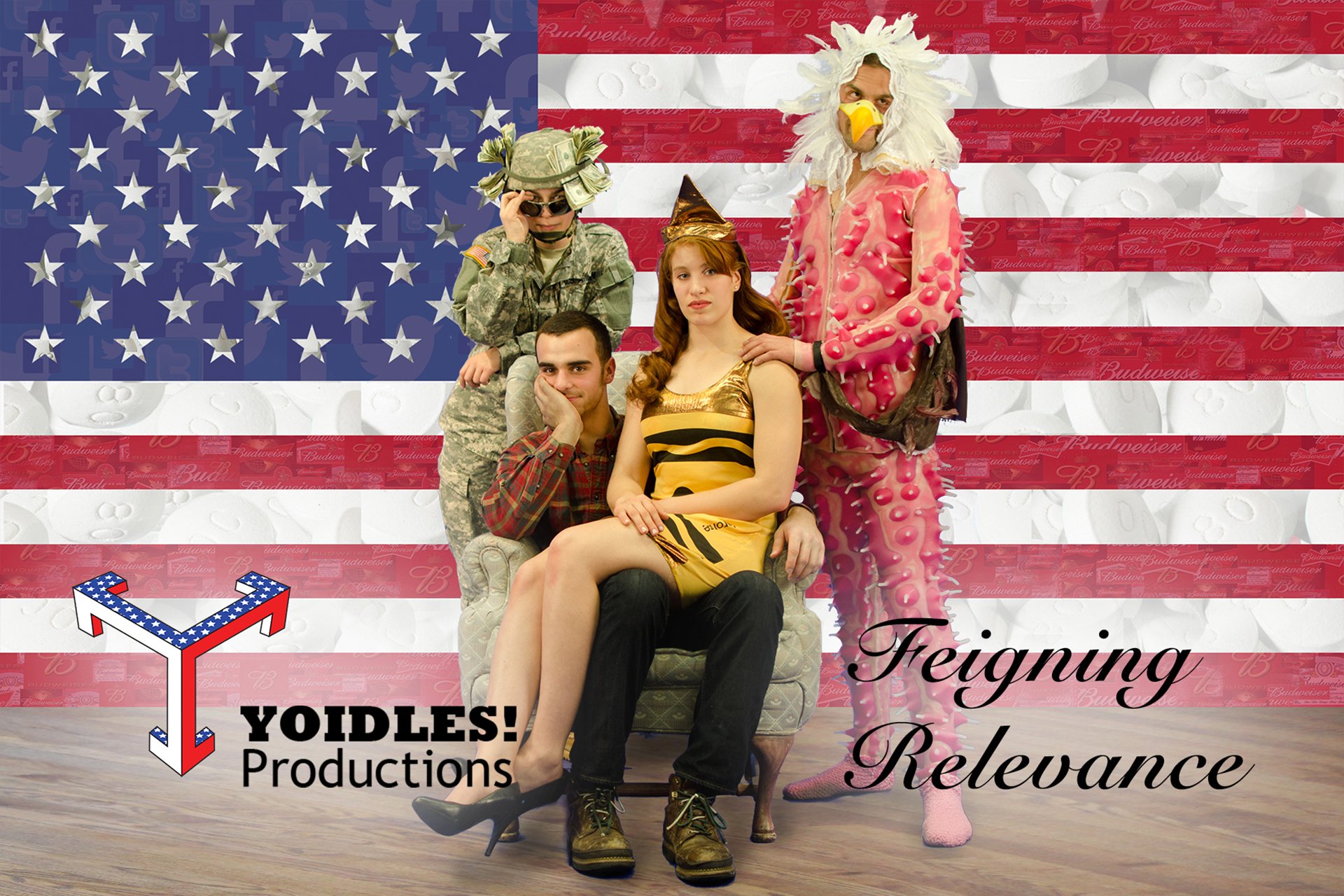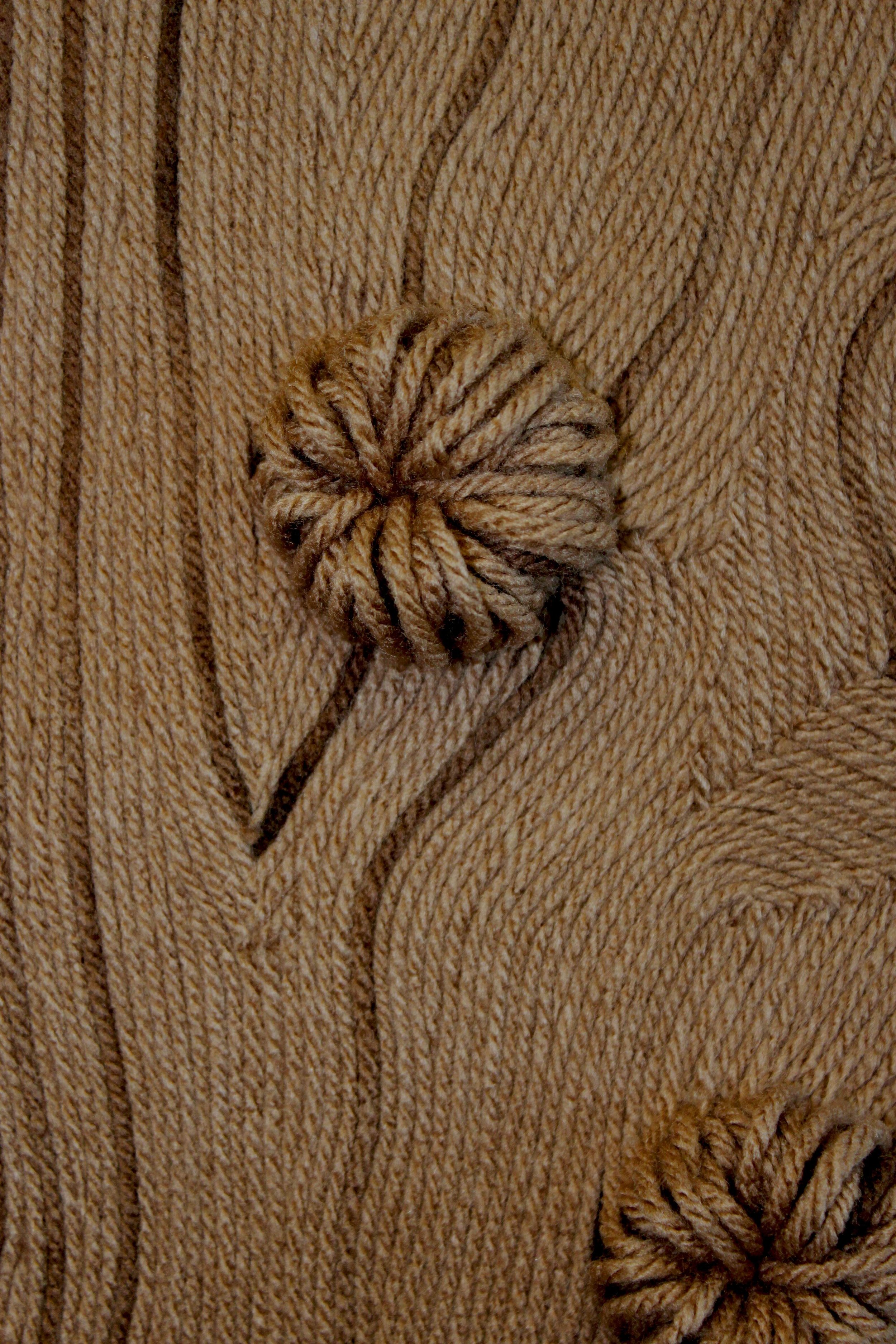ROY presents: Amanda Erin Comstock, Bradley Weyandt, Brooks Wenzel, & Douglas Dale
Amanda Erin Comstock
Foraged Faces: Watching Nature/Nature Watching
For the year 2021, I committed to a daily practice of walking outdoors, a commitment which (like most practice) I fulfilled most of the time. My commitment was a physical commitment to myself, and a commitment to the natural world – to notice and appreciate the offerings and changes through the seasons. Each walk I collected natural items I found, and then shaped them into a mould created of my own face.
This work then is about practice, showing up, being present. And also, a documentation and archive of time spent connecting and entangling with the natural world. And can also be a meditation on memory, what we collect and how we recollect.
This work became about finding ourselves in the natural world. Nature holds up a mirror of lessons that teach us about our humanity and how to be with the Earth. This work is a celebration of the abundance of the Earth, as each mask was created from the tiniest of harvest. This work hopes to remind us that we too are nature. Comprised of the same elements, we are, in fact, always nature looking at nature. This work encourages you to find yourself in nature, and nature inside of you.
ROY asks
What is your name and affirmed pronouns?
Amanda Erin, she/her
How has art (whether it be your own or art in general) changed you?
Engaging with and making art is a commitment, a relationship, a dance. Art emerges from a mix of materials, time and vision, and the movement of hands and bodies. The art is both the artifact and a record of the process, of the commitment. Art (and specifically artistic practice) is an anchor for me, a place that I return to again and again to explore, to discover, the material, the environment, myself, and where we overlap.
How did you start your artistic practice?
A practice is something you are willing to show up for most every day. This work started with the practice of taking a walk almost every day and collecting materials I found on the walk. The creation of the masks emerged as something practical to do with the materials, and also became its own practice. With art, I think it works like this – you must take the first step, and then from that step, you see the next possibilities, and then take the next step. That’s the exciting part about art.
When a first-time viewer sees your work, what is the first word that you hope they think when looking at it?
Connection.
Bradley Weyandt
no-no, oh no
I unfurl and stretch a large knit textile across a handful of nails hammered to the wall, the fabric’s slight deviations in pattern and handiwork disrupts mirroring. The glittery abstraction, digitally created by warping, layering, repeating, mirroring, and transforming a loaded word, or sometimes phrase, uses a font that references the baroque and impossible-to-read logos of black metal bands. The digital file is then relayed to a hacked Brother KH910 knitting machine and I knit, row-by-row, manually pushing and pulling a carriage across a bed of needles. The unconventional fibers of Mylar and monofilament replace yarn to create this ornate tapestry. It is an investigation into the illegible and the legible, the mechanical and the handmade, and ornament and essence.
This investigation of ornamentation carries through a body of work of disparate yet pointed objects and materials. Of the exhibition, holding the floor as a composed, yet entangled mess, floppy, hot pink silicone fills the holes of Ford Mustang tail pipes. Nearby, a biker jacket, hung, is completely coated in cream-centered black licorice. Utilitarian objects become impractical and found textiles become heavy and cumbersome. As I individually dab E-6000 to ten pounds of licorice slivers I meditate on to whom these objects belong. Who is equipping that battle jacket, who is driving that flashy, Ruby Red Ford Mustang? This work conflates images and objects within male-domineered subcultures: to what extent does a black robed and corpse-painted metal front man differ from a pink PVC outfitted painted queen lip-synching to “Mustang Sally”— is she drag racing like she’s in 2 Fast 2 Furious? Does costume, or a façade, (rubber) cement one’s place? What defines and constitutes a costume, camouflage, a façade, a ruse—is it all theatrics?
The work included in this exhibition was funded in part by the Greater Columbus Arts Council’s Support for Professional Artists Grant.
ROY asks
What is your name and affirmed pronouns?
Bradley Weyandt, he/him/his
How has art (whether it be your own or art in general) changed you?
Making is such a challenging pursuit—but as I’ve persisted on, I’ve relished more and more the privilege to be tricky and slippery.
How did you start your artistic practice?
In another life, I imagine I am an athlete. In this one, for right now, I am an artist.
When a first-time viewer sees your work, what is the first word that you hope they think when looking at it?
Beast!
Brooks Wenzel
Oversold Applicability
I believe that the powers of our culture abuse critical thinking. When a plus b does not equal ab cents, it is thought to make no sense at all. Enter: standardized fact-regurgitating-metrics to measure quantifiable modes of critical thinking and marginalize focus on abstract forms of critical thinking. The illusion of a binary between success and failure has been created to deceive people into thinking that abstraction is like an outdated analog system.
When particles and people abnegate cooperation with organized systems due to relative density, they are compartmentalized in a clever carton to serve another capitalist revenue stream. It seems to me that America focuses too greatly on homogenization.
I hope to contrast the societal norm with intentional absurdity in order to highlight incidentally absurd social constructs as learned behaviors. I use performance, everyday objects, and social systems, and patterns of thinking, and sometimes flimflamming to hopefully initiate questioning of these behaviors. Particularly, I aim to induce questioning of Western privileged hierarchal and capitalist systems.
In Lost Wax, where a polished bronze replica of a crayon with a counterfeit label (bronze does not exist in crayon packs anymore so I have to fabricate labels) is placed in random crayon packs in stores across North America (so far...soon to be world) with no indication of the source or purpose, the unsuspecting consumer will experience the un-interrupted relationship between the object, themselves, and their imagination. Additionally, this object acts as a moment of truth in the education of color disrupting the teachings of “the Great Teacher of Color” - Crayola, while placing a “Fine Art Object” in the hands of a child who has no understanding of the economy of Fine Art.
The free market tends to try to dominate the social hierarchy, our thoughts, impressions, and our definitions of success and failure. These American ideals have been bought, sold, gambled, stolen, and force-fed globally, so essentially they affect the entire world.
ROY asks
What is your name and affirmed pronouns?
Brooks Wenzel, He/Him
How has art (whether it be your own or art in general) changed you?
I think of this question in the inverse. I think “how has society changed me,” because I feel like as we grow into the societal constructs we have to depart from our imagination to function. It’s a trade though – an ebb and flow. Pure imagination doesn’t translate without communication in our physical world, and the goal is to find the balance where one can fan the flames of the other without blowing it out. I might walk through the culture I know and cultures I’m learning about looking for ridiculous elements to deconstruct, but I take the things I learn into the studio to empower my experimentation. And then I’m like “I think I’m rambling on in this response and taking myself too seriously. I’m going to go ahead and stop now.”
How did you start your artistic practice?
How did I start my artistic practice? I mean, I believe it existed long before I embraced industrialized language about it like “practice,” and long before I ever acknowledged that I was trending towards a life-long pursuit of honing it. Rumor has it I was born onto a pile of crayons, and I had to draw my own food and shelter. It was challenging for a newborn.
When a first-time viewer sees your work, what is the first word that you hope they think when looking at it?
“Hmmm”
Douglas Dale
Warped Wood
How does our identity differ from our exterior presentation? How does our history of gendered materials apply to a transgender landscape? My practice investigates these questions, revolving around the creation of Second Skins: encasing furniture in polyethylene membranes or contouring yarn to trace the grain on found wood.
I draw inspiration from camp, drag, and the club scene: spaces where a reality is the product of transgression through illusion. I reside in subcultures where value is determined not by material costs, but by attention, labor, and subverting tradition. Proudly nonbinary, I extend my own queering unto inanimate objects: mixing masculine and feminine materials, hard and soft, textile and wood.
ROY asks
What is your name and affirmed pronouns?
Douglas Dale, they/them
How has art (whether it be your own or art in general) changed you?
Art has allowed me to express myself, ideas and emotions that language is not current able to communicate. Through art, I’ve been able to meditate and contemplate larger ideas, weird the memories and connotations of material, and investigate how a viewer consumes and interpret the larger world.
How did you start your artistic practice?
I first began my practice in high school in public art classes. My passion increased at 17 as an arts & crafts counselor at an underfunded summer camp, forcing me to build programming with zero budget, building works out of the supplies already available around the cabin.
When a first-time viewer sees your work, what is the first word that you hope they think when looking at it?
When a new viewer sees my work, I hope they have a moment of realization, a little “oh!”. Much of my work is based in illusion, and I hope I can engage a view enough past that moment where someone sees past what the artwork resembles and into seeing what it truly is.




